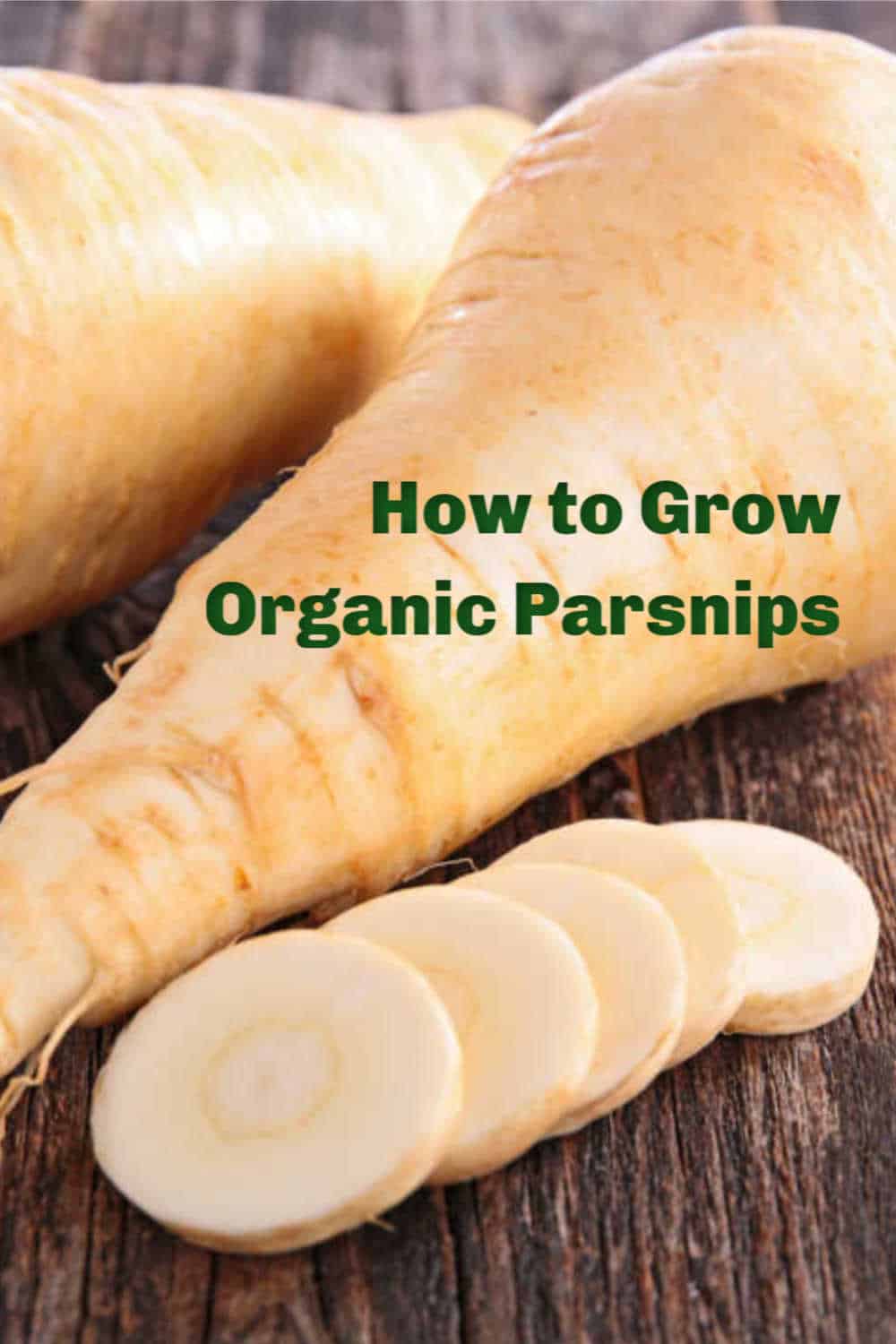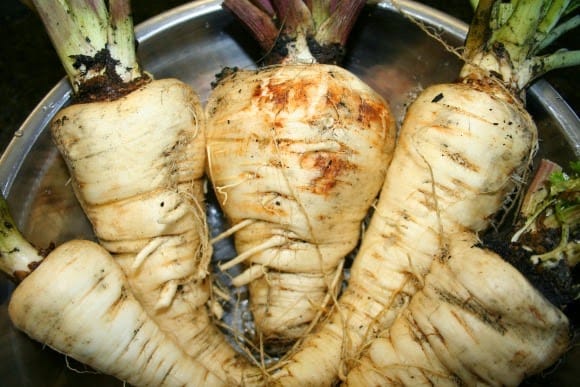Growing parsnips in a raised vegetable garden bed takes several months but the results are worth it. Here’s everything you need to know to grow organic parsnips in your backyard garden.
Growing Parsnips
Parsnips are familiar to southern gardeners, who use the hot, long summers to their advantage to grow this delectable root vegetable. Native to Europe and Asia, parsnips have been cultivated since ancient times. The Romans loved them, and European cultures loved them too because parsnips can be left in the ground during long, cold winters. Their flavor actually improves after a frost, and they’ll keep for long stretches if left in the nurturing earth.
Maybe that’s why the early American settlers loved them so much. I read an interview with the horticulturist at Sturbridge Village Museum, and she mentioned that every early American garden contained parsnips because they stored well and provided a welcome fresh vegetable during the long Massachusetts winters.
Parsnips do need a long growth period and cannot be rushed. They also need plenty of loose soil. Rocky, clay soil must be amended to improve texture and drainage or parsnip roots will rot or deform. Growing organic parsnips begins with site selection, followed by seed planting, care, and harvesting.

Organic Parsnip Requirements
Light Requirements for Parsnips
Like most vegetables, parsnips require full sunlight. Full sunshine is defined as six or more hours per day of bright, steady, direct sunlight. The more sunlight they receive, the better.
Soil Requirements
As an organic gardener, you know how important soil quality is to your plants’ health. Good soil builds healthy plants. Your first step for growing parsnips is to get your garden soil tested at the local County Cooperative Extension office or garden center.
Parsnips need a sandy, loamy soil. They prefer a slightly acidic pH.
Dig the garden bed to a depth of two feet in the area where you want to plant parsnips. Mix in abundant helpings of compost and composted manure. Talk to the group that conducted your soil test for any organic recommendations to improve soil texture or pH in addition to adding composted manure or garden compost.
If your soil is heavy clay, consider raised beds. A simple raised bed to grow parsnips can be constructed by stacking foundation building blocks or using old truck tires. Stack two truck tires and fill with bagged, sterile organic potting soil from the garden center. It’s a fast way to create an ideal bed for growing root vegetables such as parsnips.
Starting Parsnip Seeds
Parsnips grow best from seeds. Buy a fresh package of seeds; parsnip seeds lose their viability quickly, and even a one-year-old package of opened parsnip seeds probably won’t germinate.
Plant the seeds directly into the ground as soon as you can. Plant one seed every two inches or so. If you mess up and plant more than one, don’t worry – you can thin them out later.
Don’t plant them too deeply. Plant just about 1/2 inch deep. Cover lightly with soil.
Water them well after planting seeds.
Caring for Organic Parsnips
Be patient when growing parsnips. It takes about two weeks for parsnip seeds to germinate. During that time, be sure to water the area daily if the forecast doesn’t call for rain.
Once the seedlings have two sets of leaves, you can thin out any that are growing too closely together. Just pull out the smaller plant and compost it. Don’t feel bad about it; if you leave them growing too closely together, you’ll end up with stunted parsnips.
Weed by hand during the growing season. Keep the area well-watered.

Harvesting Parsnips
Let them grow, and grow. Harvesting is typically after the first frost for your area. Don’t pull them up sooner than that. Even if the parsnip is big enough, they taste sweeter a frost.
One of the best things about growing organic parsnips is that they can be left in the ground after the frost. You don’t have to rush around in the fall harvesting, canning, or placing the harvested parsnips in a root cellar or refrigerator. Just leave them be. Even if the greenery gets nipped by the frost, the edible roots will still be tasty.
Pests and Diseases
Organic gardeners are often concerned with pests and diseases. After all, most gardening books recommend conventional, chemical-based treatments for insects and diseases of vegetable plants. Fortunately, only a few problems trouble most parsnips, and with the right care, you can prevent many problems.
Insects
Three insects can harm parsnips: aphids, leaf miner, and carrot rust flies. Many organic gardeners use traps to keep insects away from plants. Pastes can be applied near the plants so that these insects stick to the paste before getting to the plants.
Another simply organic control method for pests is a floating row cover. A floating row cover is a special cloth purchased at the garden center which allows light and air to circulate among the plants but keeps insects away. It is placed over a frame, usually made from hoops of flexible PVC pipes or a special frame meant for row covers, and removed for watering and pollination. Since parsnips don’t require pollination to produce a crop, row covers are a good solution.
Lastly, good garden maintenance can prevent many insect pests from moving from nuisance to threat stage. Remove all garden debris at the end of the season so that insect eggs cannot winter over. Rotate crops, planting root crops such as carrots and parsnips in different areas of the garden so that insects that plague one type of crop don’t have an easy time of it when they emerge in the spring – they won’t find conveniently placed food sources, your plants, nearby.
Parsnips are usually quite hardy, however, and even with a bit of insect infestation, are fine. Carrot fly will leave some marks on the roots, but you can trim them away. For organic gardeners, a few insects is an acceptable trade-off for avoiding chemicals.




